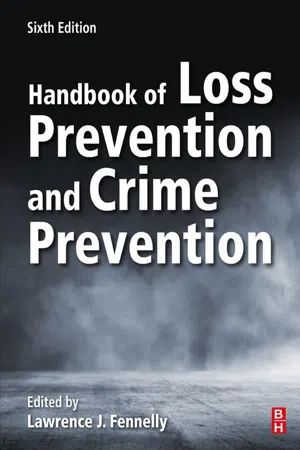
Handbook of Loss Prevention and Crime Prevention
Lawrence J. Fennelly
- 544 Seiten
- English
- ePUB (handyfreundlich)
- Über iOS und Android verfügbar
Handbook of Loss Prevention and Crime Prevention
Lawrence J. Fennelly
Über dieses Buch
Handbook of Loss Prevention and Crime Prevention, Sixth Edition, continues to serve as the preeminent, comprehensive resource for devising practical, modern solutions for securing people and property. The book presents the latest key applications for securing structures with Crime Prevention Through Environmental Design (CPTED), including plan review, report writing, presentation skills, lighting, zoning and behavioral management. Other sections address the latest issues related to active shooter situations, information technology, and international terrorism. Practical examples are provided, exploring applications for limiting retail crime and employing disaster readiness strategies.
Edited by seasoned, trusted security practitioner Lawrence Fennelly, the book features contributions by some of the most well-known experts in the field. Readers will find this book to be a trusted resource for physical security professionals, students and certification candidates who must navigate, and make sense of, today's most pressing domestic and international security issues.
- Covers every important topic in the field, including new coverage of active shooters, terroristic threats, and the latest on wireless security applications, data analysis and visualization, situational crime prevention, and global security standards and compliance issues
- Provides a comprehensive examination on the content and skills necessary for passing the ASIS Certified Protection Professional (CPP) exam
- Features contributions from the leading, most trusted subject-matter experts in the field